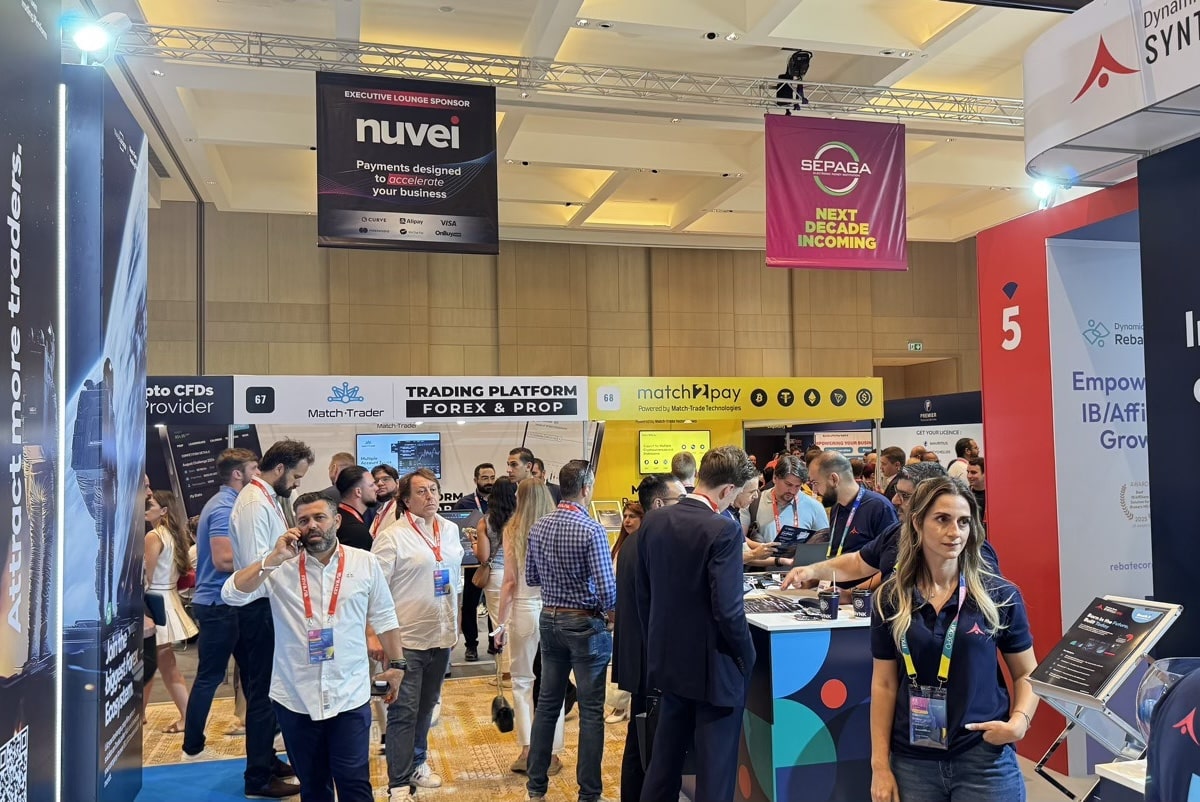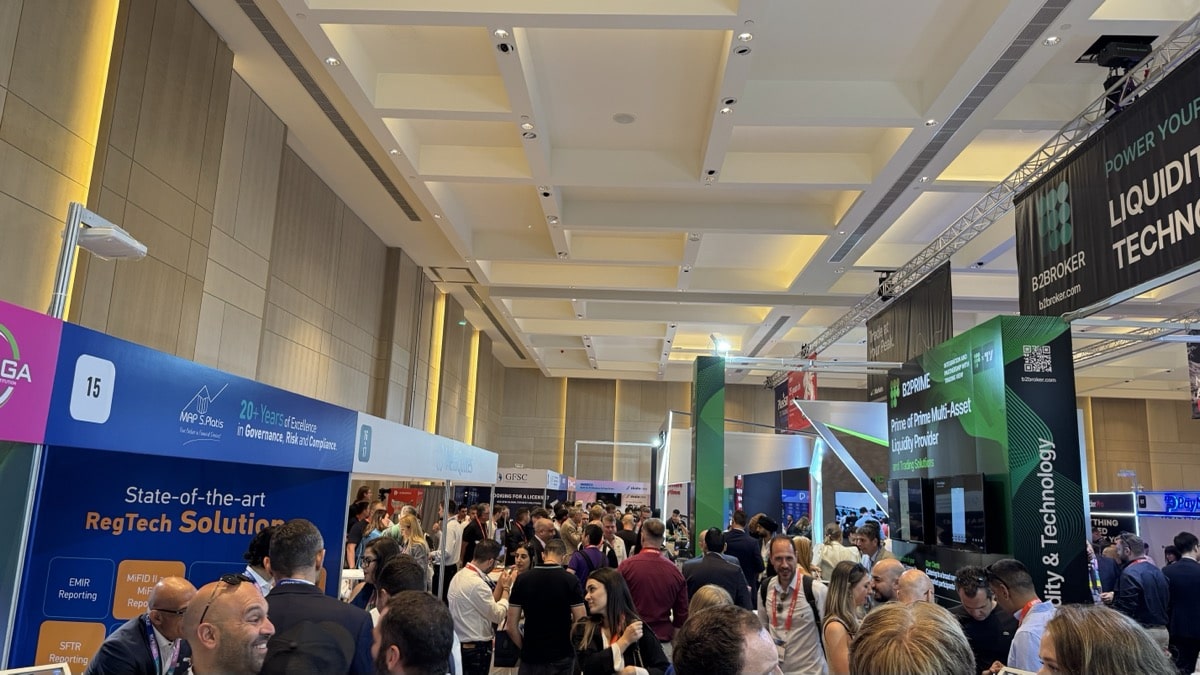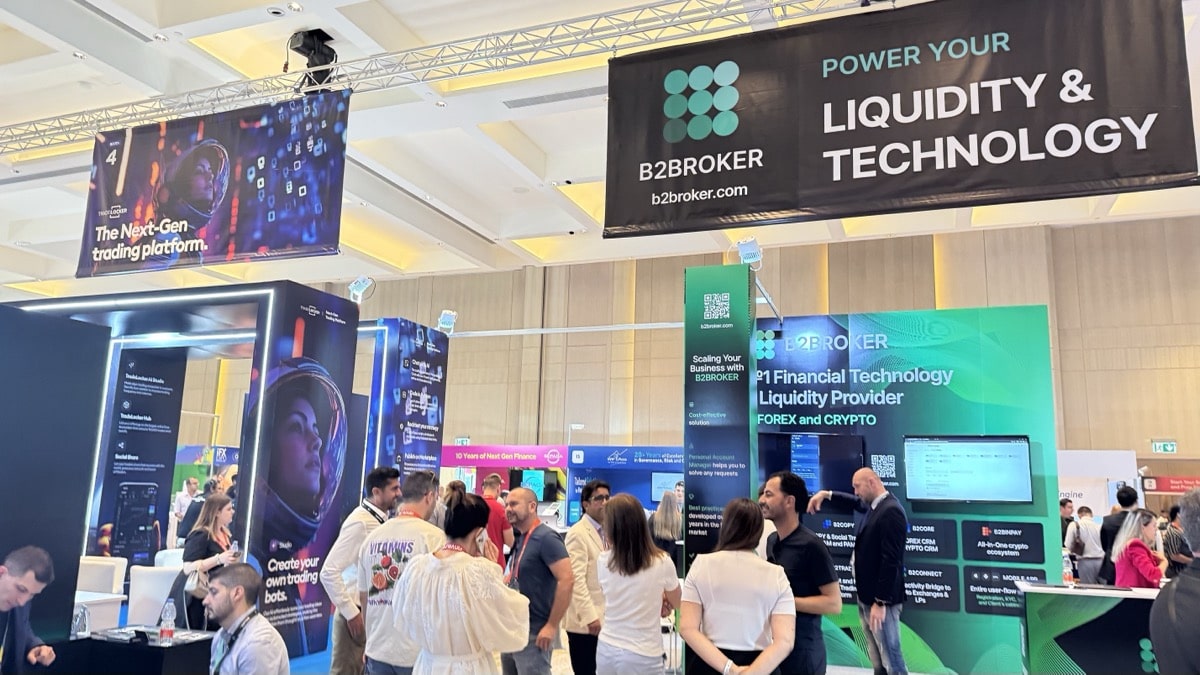As our team has returned from the exciting expo floor of iFX EXPO International 2025 that took place in Limassol, Cyprus between June 17-19, we are ready to share some insights on online trading, payments, and industry partnerships revealed in dynamic panel discussions and heated expert chats.

This year, iFX EXPO International 2025 gathered over 170+ leading exhibitors from the online trading industry, including liquidity providers, trading platforms, payment solutions, compliance specialists, brokers, prop firms, fintechs, regtechs, service providers, and IBs. Over 6,000 attendees from every corner of the world got together for quality networking, as well as the discovery of new financial markets and technologies.
Keynotes
Some of the main topics discussed at iFX EXPO International 2025 included:
- Cards being increasingly replaced by wallets and A2A transfers in the payment landscape;
- Evolution of crypto investments and stablecoins;
- Departure from traditional prop trading and embracing novel strategies: gamified prop trading, social trading, GPT-led trading, a shift from CFDs to futures, and more;
- How payment industry players can keep up with evolving regulations and cybersecurity threats;
- The changing roles of affiliates and IBs as they become partners rather than intermediaries;
- The importance of liquidity and risk management in high-volatility markets;
- Gaining a competitive edge by mastering social media conversions and speeding up tech infrastructure deployment.
Transition From Cards to Wallets and A2A Challenges Legacy Payment Models
For years, bank cards have remained the key alternative to cash payments. Even today, card transactions account for about one-third of all commercial sales. In some economies, they remain more relevant than in others and may fuel up to 60-70% of consumer spending.
Nevertheless, digital wallets’ share of online spending is inevitably increasing. Last year, e-wallet transactions enabled more than half of e-commerce purchases and 32% of offline point-of-sale payments. A2A money transfers also gain traction, especially in emerging economies.
Major global card networks like Visa acknowledge the shift, expanding their offering suite to satisfy customer payment needs. Michael Ioannides, Visa Country Manager Cyprus at Visa Europe, noted that “Visa is not just about cards” anymore. The payment giant is increasingly focusing on non-card-based digital flows, including direct account transfers and wallet payouts. Through its Visa Direct solution, the company processed more than 7.5 billion transactions in 2023 alone.
What does it mean for the wider fintech community? To begin with, firms that offer or integrate non-card solutions (like open banking, instant bank payments, and wallet infrastructures) will be best positioned to grow in the nearest future. Successful fintechs must prioritize flexibility in payment architecture, while offering frictionless, cost-efficient solutions to merchants and marketplaces, with UX and speed being critical differentiators.
While big payment players transit from legacy card-focused payment rails, smaller agile innovators can embrace opportunities in value-added services around the new wallet and A2A rails, such as fraud prevention, identity verification, and embedded finance tools. Developing economies, where A2A and wallets are leapfrogging card-based systems, can be a priority for scaling providers but advanced countries should also not be overlooked as they may lack innovations in the existing payment infrastructures.

Crypto Assets Increasingly Become Part of Investment Portfolios With Stablecoins Gaining Prominent Role
Crypto assets are increasingly becoming a component of diversified investment portfolios, as investors look beyond traditional assets for returns and hedging opportunities in volatile markets. While Bitcoin and Ethereum remain public favourites, the spotlight is gradually shifting toward stablecoins.
These digital assets pegged to fiat currencies gain prominence in yield-generating strategies due to their low volatility and growing use in trading and remittances. Institutional and retail investors alike are recognizing stablecoins as a bridge between the crypto and fiat worlds, offering liquidity, faster settlement, and cost efficiency.
The rising demand has intensified competition among stablecoin issuers. USDT (Tether) and USDC (Circle) continue to dominate the market in terms of market cap and usage, but other tokens are gaining traction in specific regions and use cases. For example, Fiserv has recently partnered with Mastercard to integrate its FIUSD stablecoin across the payment network provider’s products and services.
Besides, the two leading stablecoins are issued and traded under centralized oversight. Meanwhile, DeFi enthusiasts prefer decentralized alternatives such as MakerDAO’s DAI or Curve Finance’s CrvUSD. These and other stablecoins that rely on smart contracts and cryptoassets as collateral offer more transparency and programmability, appealing to DeFi-native investors. As stablecoin adoption grows, the race is on to establish trust, compliance, and utility – key differentiators in this rapidly evolving space.
How to Protect Capital in Highly Volatile Markets
In high-volatility markets, particularly in the crypto space, liquidity and risk management are critical for protecting capital and maintaining trading efficiency. In 2025, liquidity expectations have evolved significantly. With tighter spreads, increasingly fragmented trading venues, and heightened demands for speed and accuracy, liquidity is no longer just about availability, but rather about strategic understanding.
Across markets like FX, crypto, and synthetic assets, the key challenge is pinpointing reliable sources of flow, discerning actionable data, and executing trades instantly across a complex and dispersed landscape.
The volatile nature of crypto markets with their extreme price swings, means investors must be equipped to act fast and manage exposure in real time. High liquidity ensures minimal slippage, while solid risk management (diversification, automated controls, and smart collateral practices) helps limit downside in volatile conditions.
However, current geopolitical conditions have led to increased volatility in traditional markets as well, calling for similar mitigating strategies. As the lines between traditional and digital assets blur, mastering these capabilities becomes essential for any investor navigating today’s dynamic markets.
Keeping Up With Evolving Markets Demands Going Extra Mile in Strategic Thinking, Cybersecurity and Compliance
The conference participants also actively discussed that proprietary trading is undergoing a major transformation, moving beyond traditional strategies and embracing more dynamic, tech-driven models.
Gamified prop trading platforms are attracting a new wave of traders by combining skill-based competition with real capital, while social trading allows users to mirror the strategies of top performers, democratizing access to sophisticated techniques.
Experts also noted a shift away from retail-focused CFDs toward more transparent and regulated instruments like crypto and micro futures, as traders seek better pricing, lower costs, and institutional-grade execution.
Keeping up with rapidly evolving regulations is also becoming one of the biggest challenges for Payment Service Providers (PSPs), especially as global scrutiny intensifies. With regulatory fines surpassing $6 billion in 2023, mostly linked to inadequate KYC and AML practices, PSPs must now integrate compliance into the very fabric of their operations.

The Role of AI and Automation in Modern Trading
As highlighted by Anthony Migui Njagi of Virtual Pay, automation and machine learning are proving invaluable in streamlining onboarding while reducing compliance gaps that could otherwise go unnoticed. AI-driven solutions not only enhance accuracy and scalability but also offer global coverage, allowing businesses to operate with greater confidence across jurisdictions.
However, the pace of regulatory change often surpasses the speed of implementation, making it essential for PSPs to invest in adaptive RegTech infrastructure that can evolve in real time. In this high-stakes environment, balancing compliance and innovation isn’t optional, but a key component of a PSP survival strategy.
Artificial intelligence is also at the forefront of cybersecurity innovations. AI is transforming cybersecurity with its real-time detection and rapid response to threats, far outpacing traditional methods. Through predictive analytics, AI anticipates potential attacks by analyzing historical data, allowing organizations to act proactively. Automation powered by AI also streamlines routine security tasks, freeing human experts to focus on complex challenges. Crucially, AI systems continuously learn and adapt to new threats, keeping payment and trading systems resilient against evolving cyberattacks.
Meanwhile, GPT-led trading tools are enabling traders to analyze complex market data, automate strategies, and adapt to rapidly changing conditions with unprecedented speed. The important question is whether they can actually substitute human experts in the field, with their domain knowledge, strategic thinking, and intuition that machines can never imitate. These and other ethical implications of AI use were also on iFX Expo International 2025 agenda.
Changing Regulation Reinvents Broker and Affiliate Operation Models
Regulation has also fundamentally reshaped how affiliates and Introducing Brokers (IBs) operate, challenging the traditional model of third-party promotion in financial services.
As Yoli Chisholm of Deriv noted, the compliance landscape is highly fragmented, changing rapidly across jurisdictions and demanding constant vigilance. New mandates, such as influencer registration in the UAE or stricter marketing disclosures enforced by CySEC and FCA, are placing greater responsibility on brokers to ensure their partners follow local laws. This shift has transformed affiliates and IBs from loosely connected promoters into regulated partners who must now navigate legal scrutiny alongside brokers.
For many small affiliates, this evolving environment presents operational hurdles they are not equipped to handle alone. As a result, brokers are increasingly expected to provide structured, tech-enabled support throughout the whole journey: from automated onboarding and identity verification to pre-approved content and transparent compliance workflows.
The regulatory burden has become a shared one, and brokers who fail to guide or monitor their affiliates risk serious penalties. While a universal compliance standard remains elusive, the industry is moving toward a more collaborative and technology-driven model where adaptability, education, and proactive engagement are key to staying both compliant and competitive.

Gaining a Competitive Edge Demands Mastery of Digital Channels and Infrastructure Agility
In the fast-paced world of payments and online trading, maintaining a competitive edge requires more than innovative fintech products. Firms that turn social media interactions into loyal clients and active traders not only strengthen their brand but also accelerate customer acquisition in a crowded market.
Simultaneously, rapid implementation of scalable tech infrastructure, such as flexible APIs, white-label payment gateways, automated onboarding, and real-time compliance tools, allows businesses to swiftly adapt to changing regulations and evolving user needs. These capabilities together form the backbone of a resilient, responsive strategy designed for sustained growth and market leadership.
About iFX EXPO International 2025
iFX EXPO International serves as the premier global hub for online trading and fintech innovation, presenting unmatched networking opportunities, cutting-edge content, and a showcase of the latest industry solutions.
Being held annually for more than a decade, the conference hosted panel discussions and keynotes on topics such as crypto regulation, AI in trading, and platform innovation, featuring industry leaders like Visa, Deriv, MetaQuotes, and others. This year, over 6,000 global professionals and some 150–170 top-tier exhibitors, including brokers, fintechs, liquidity providers, payment and compliance specialists, gathered in Limassol to explore innovations and forge partnerships.









